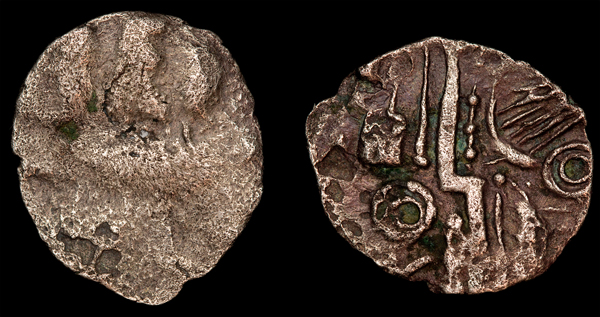
Unique ID: 23
The Badbury Rat quarter staters were minted by the Durotriges sometime between 50 BC and 40AD. They are a continuation of the boat and geometric theme started by the Morini tribe with their GB-Ca2 and GB-D quarter staters. By the time the Durotriges minted these they had run out of precious metals, so these are made from a low quality billon alloy containing no gold and almost no silver. They would normally be classed as silver units because of their size, weight, and thickness, but they are quarter staters because the entire Durotriges monetary system became highly debased (they eventually struck, and then cast, staters in bronze), and inflation would have caused the lower denominations such as silver units to be abandoned, leaving just staters and quarter staters, and ultimately just staters.
The transition from the “Duro Boat Dots” type (ABC 2211; see 46 and 87) to the Badbury Rat type is indistinct, and it is likely that they are different ends of the same type which had decreasing precious metal and weight. The description given in “Ancient British Coins” isn’t detailed enough to definitively categorise all coins of these types. This one however is definitely a Badbury Rat due to the worn obverse die and its thinness.
This is one of two in the collection (see 10).
